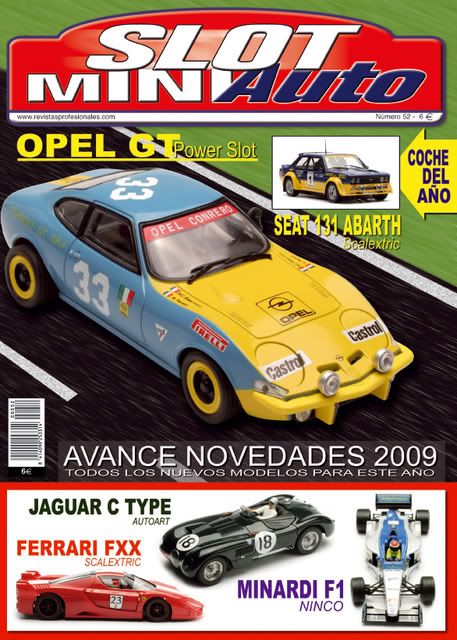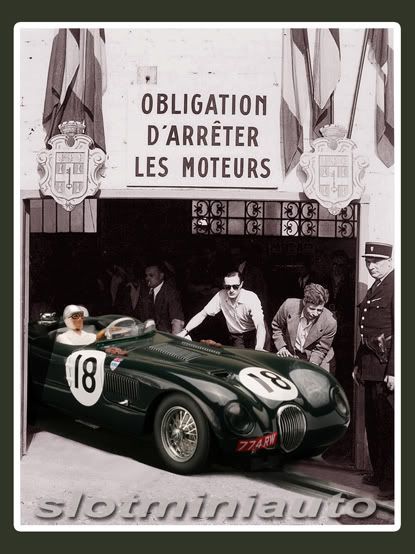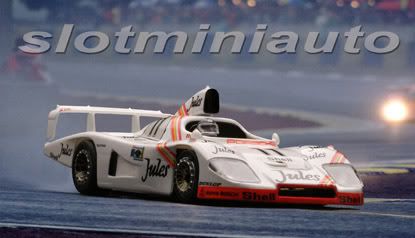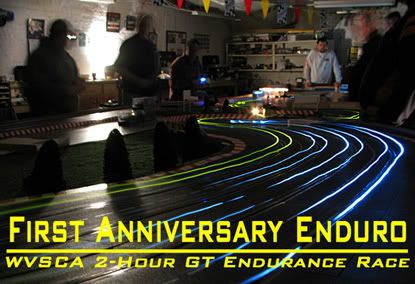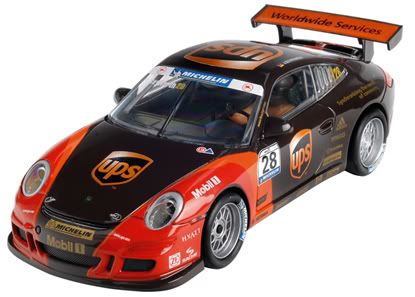
Beardog Racing and AB Slotsport PRESENTS: THE PINK PERIL
This is a new car released by Beardog racing which is available through ABSlotsport.com and can be seen here as well.
Contact Beardog directly at: beardogracing@comcast.net
THE 1964 S&H PINK STAMPS LOTUS 30.
HISTORY
HISTORY: In January 1964 the Lotus 30 was introduced at the Racing Car Show in London, as a logical extension of Lotus’s Indy car program with Ford. The intention was to build a ford powered sports car to compete in the Can-Am series for unlimited sports cars.
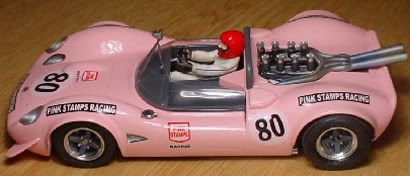
Colin Chapman utilized the famous backbone frame idea that had worked so well in his Lotus Elan. Len Terry designed the car utilizing a one piece glass fiber body and Dave Lazenby directed operations for both the sports car and Indy car programs, and Jim Clark was the designated driver.
But alas even the great talent of Jim Clark could not tame this beast. So Lotus made the type 40, then gave up.

This Lotus 30, was delivered from Lotus Components to John Willment’s Race Shop in component form, it was assembled by the Willment team, and a Ford Advanced Vehicles, Lotus modified 4.7 litre cast iron V8 was installed. The car was the 5th car made of the series two, type Lotus 30. The car is identified as a 30/40 because it was updated to the Lotus 40 specifications.
The first race for this car was May 1st 1965, driven by Brian Muir at Goodwood in the Tourist Trophy FIA International Race for prototypes, painted (as per reference photo) in Willment team colors of red with white stripes running longitudinally down the length of the car. The car was then raced at Mallory Park, Silverstone, Zeltweg, Brands Hatch, Nurnburg and finally on Oct 31st at Riverside California for the Times GP Can-Am race. The car had varying degrees of success but did mange to set several track records. By the time it reached California the car had been fully updated to Lotus 40 configuration.
For the first part of 1966 the car toured the U.S. and Canada as a Ford show car, it now had the familiar chopped tail you see on the model. The car was shipped back to the U.K. and continued to be campaigned in international racing in Willment colors, but managed by CarCraft racing Organization. (Ford Advanced Vehicles).
During 1968 and 69 interest in Group 7 sports cars slowly waned in Europe, so the car was sold in 1969 to Paul Gresham, who obtained sponsorship from Sperry & Hutcheson. The car was now painted in the familiar bright pink because S&H trading stamps were pink in the U.K. instead of green as in America. John Markley was contacted as the driver and the car was entered the U.K.’s National Racing Series.
At this time the car was modernized, modern racing tires were added, the wheels went from 13” to 15”, fender flares were added, and fuel capacity was reduced. This is when ‘The Pink Peril’ started wining races, out of the 18 races it was entered into in 1970 it was the overall winner at 4. It was during 1970 that it was fitted with a new JW 365 bhp Ford engine, still with Tecalemit fuel injection (an option included with this model) and a tuned exhaust sytem.
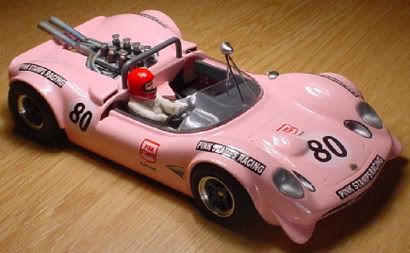
At the end of 1970 the roll bar hoop was added, and during 1971 still raced in the pink livery, but without S&H sponsorship, it won 3 races out of the 7 entered.
In November of 71 it received it’s final and most powerful engine. Sourced from Ford Advanced Vehicles in Slough, a 5 litre experimental pushrod motor with Gurney/Weslake Mk IV cylinder heads, and four dual throat Weber 48IDA carburetors was installed, this engine was good for 453 bhp @ 6,000 rpm.
In 1972 Pinkie raced in 6 events for 2 outright wins. The final race of the season was at Mallory Park unfortunately John crashed the car while in 4th position damaging the rear of the car.
After the race at Mallory the car was repaired and in 1978 shipped to the U.S. for resale. It was purchased by Dick Keves, and John Strange and started undergoing restoration in Oregon, and is now in better condition than when it raced under S&H sponsorship.
So to recap, ‘The Pink Peril’ Lotus 30/40 competed in over 50 international races, and has a total of 21 wins, 10 seconds, 5 thirds and 8 lap records.
A more complete history, full specs and far more than you ever wanted to know about this car and other Lotus 30’s is available at: www.lotus30.com
PINK PERIL SPECIFICATIONS:
CHASSIS: Chapman designed steel backbone chassis.
BODY: Len Terry designed Glass-Fibre.
ENGINE: 5 litre Ford pushrod V-8 with 48 IDA Weber Carbs, and Gurney/Weslake heads.
WHEELBASE: 7’ 10 1/2”
TRACK: 4’ 5” (stock Lotus 30)

